A STAR is born...
A STAR is born....
Extracts taken from STAR: a consensus for skin tear classification Carville K, Lewin G, Newall N, Haslehurst P, Michael R, Santamaria N & Roberts P
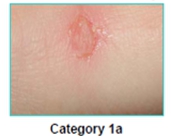 The Payne-Martin Classification System for Skin Tears was devised as a result of a pilot study in 1985 and a descriptive study in 1990 and until now has been the only skin tear classification system reported in the literature. However, this classification system has been poorly utilised in Australia and it is not clear whether the reason for this is lack of awareness amongst clinicians or because of problems with the classification system itself.
The Payne-Martin Classification System for Skin Tears was devised as a result of a pilot study in 1985 and a descriptive study in 1990 and until now has been the only skin tear classification system reported in the literature. However, this classification system has been poorly utilised in Australia and it is not clear whether the reason for this is lack of awareness amongst clinicians or because of problems with the classification system itself.
It was the lack of data on skin tears in older people that prompted researchers from Silver Chain and Curtin University of Technology to develop a research partnership to fill this gap. However, it was quickly realised that an essential prerequisite for conducting either a prevalence or incidence study is the availability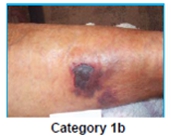 of an accepted classification system than can be used reliably by different individuals working in different health and aged care settings. Therefore the aim of the first stage of the project was identified as the development of a universally acceptable and valid skin tear classification system.
of an accepted classification system than can be used reliably by different individuals working in different health and aged care settings. Therefore the aim of the first stage of the project was identified as the development of a universally acceptable and valid skin tear classification system.
To achieve its aim the project had two specific research objectives:
1. To gain agreement from Australian nurse experts in wound management on a classification of skin tears; and
2. To test the reliability of the resulting classification system
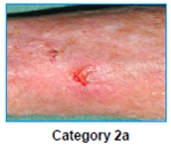
A Development Group consisting of seven clinical nurse consultants or specialists, led by a clinical investigator reviewed the Payne-Martin classification system, and came to a consensus that modifications were necessary.
After 4 separate workshops where twenty six skin tear photos were classified using the new classification system, the group had developed a tool with descriptive categories. This was then sent to the National Expert Panel for review and 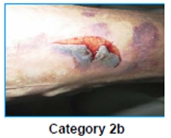 refinement where necessary.
refinement where necessary.
The National Expert Panel of eleven nationally recognised wound care experts, at least one from each Australian state decided it was not necessary to make further changes, but rather add some explanatory notes and a glossary of terms.
The resulting classification system described the five skin tear categories and outlined some of the concepts used in the description in a glossary of terms.
Reliability Testing
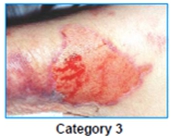 This proved disappointing with results from nurses and staff from a non-clinical background testing the system and concluding that the wording used to describe each category, rather than the characteristics of each category, needed modification. The Development Group decided that the use of simple descriptions and a photographic example of each skin tear category on the tool would lead to less confusion.
This proved disappointing with results from nurses and staff from a non-clinical background testing the system and concluding that the wording used to describe each category, rather than the characteristics of each category, needed modification. The Development Group decided that the use of simple descriptions and a photographic example of each skin tear category on the tool would lead to less confusion.
By this stage the classification tool had a new name - STAR classification system, taken from the project's acronym - Skin Tear Audit Research.
Further testing in a tertiary hospital, community nursing service and an aged care residential facility proved successful with no further changes required. This system has been 5 years in the making and we will be implementing it as of the 1st of July. For those clients using our skin tear key performance indicator, we will be emailing you with the new criteria prior to this date.
0 comments